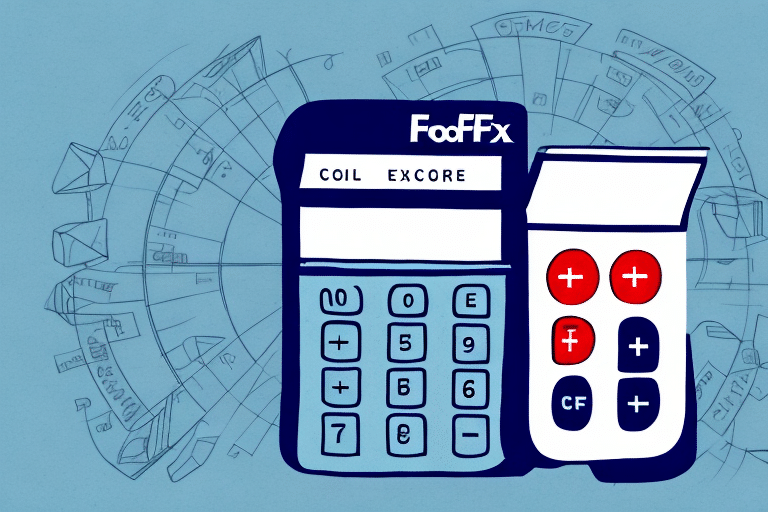Calculate Your FedEx Insurance Cost with an Easy-to-Use Calculator
Shipping packages can be a challenging task, particularly when it comes to estimating the cost of insurance to safeguard your items. Fortunately, FedEx provides an intuitive insurance calculator that enables you to swiftly determine your insurance costs and select the appropriate coverage level for your shipments. In this article, we’ll delve into the necessity of FedEx insurance, explore the various insurance options available, guide you through using the insurance calculator, and offer tips on reducing your insurance expenses.
Why You Need FedEx Insurance for Your Packages
When shipping packages, there is always a risk of damage or loss during transit. FedEx insurance is essential for protecting your valuable items and providing peace of mind. According to the U.S. Postal Service, approximately 1% of all shipped packages are lost or damaged each year (USPS Report). With FedEx insurance, you can receive financial compensation if your package is lost or damaged, ensuring that you are not left bearing the full cost.
Additionally, having insurance can help build trust with your customers, especially if you run a business that relies on shipping products. Offering insured shipments demonstrates reliability and a commitment to customer satisfaction, which can be a significant competitive advantage.
It's important to note that not all packages are automatically covered by FedEx’s liability coverage. In fact, FedEx’s liability is limited to $100 for packages that are lost or damaged during transit. This limited coverage may not suffice for valuable or fragile items, making additional insurance a worthwhile investment.
Understanding FedEx Insurance and Its Coverage Options
FedEx offers several insurance options tailored to different shipping needs:
Declared Value Coverage
Declared value coverage is automatically included for FedEx Express and FedEx Ground shipments, providing up to $100 of protection for each package. If the value of the contents exceeds $100, you can declare a higher value for an additional fee.
Carrier Insurance
Carrier insurance is offered by FedEx’s own carriers, offering additional coverage beyond the declared value. This option is ideal for shipments that require extra protection due to their high value or delicate nature.
Third-Party Insurance
Third-party insurance is provided by independent insurance companies and offers customized and comprehensive insurance options for both individuals and businesses. These policies can be tailored to meet specific needs, often providing more extensive coverage than carrier insurance.
The Benefits of Using a FedEx Insurance Calculator
FedEx’s insurance calculator provides several advantages for both individuals and businesses:
- Cost Transparency: The calculator offers a clear estimate of insurance costs, allowing you to budget and plan your shipping expenses effectively.
- Option Comparison: Easily compare different insurance options to select the best coverage for your needs.
- Efficiency: The user-friendly interface ensures that you can determine insurance costs quickly, saving you time and reducing hassle.
Moreover, using the FedEx insurance calculator adds peace of mind by ensuring that your valuable or fragile items are protected against potential shipping mishaps. A smooth and efficient claims process is another benefit, as proper insurance can expedite compensation in the event of loss or damage.
How to Access the FedEx Insurance Calculator
The FedEx insurance calculator is accessible through the FedEx website. Follow these steps to access the calculator:
- Visit the FedEx homepage.
- Click on the “Shipping” tab.
- Select “Get Rates and Transit Times.”
- Enter your shipping information, including origin, destination, package weight, dimensions, and shipping date.
- Click on “Get Your Rate” to view the available insurance options and their associated costs.
Keep in mind that the FedEx insurance calculator only covers lost or damaged packages. It does not protect against items that are prohibited by FedEx, such as hazardous materials or live animals. Additionally, the insurance coverage is limited to the declared value of the package, which is the total value of the contents.
For further assistance or additional insurance coverage, you can contact FedEx customer service, who can provide more information and help you choose the best coverage for your needs.
Step-by-Step Guide to Using the FedEx Insurance Calculator
Using the FedEx insurance calculator is a straightforward process. Follow these steps to determine your insurance cost:
1. Enter Shipping Information
Begin by entering the shipment's origin and destination, package weight and dimensions, and the shipping date.
2. Select Shipping Speed
Choose between shipping options such as “Next Day,” “2nd Day,” or “Ground.” The shipping speed you select will influence the insurance cost.
3. Choose Insurance Type
Select the type of insurance you require, such as declared value or third-party insurance, based on the value and nature of your package.
4. Review and Select
Review the calculated insurance costs and select the insurance option that best fits your needs.
Remember, the calculator only provides coverage for mishaps like loss or damage. It does not cover items that are prohibited or require special handling. Always review FedEx's terms and conditions to ensure your package is eligible for insurance coverage.
Factors That Affect Your FedEx Insurance Cost
Several variables can influence the cost of your FedEx insurance:
- Package Value: Higher valued packages incur higher insurance costs due to increased risk.
- Destination: International shipments typically cost more to insure than domestic ones, reflecting the added risks of longer transit times and more handling.
- Shipping Speed: Faster shipping options like FedEx First Overnight may result in higher insurance costs.
- Shipping Method: Premium shipping methods or specialized services may come with higher insurance fees.
- Item Type: Shipping electronics, fragile items, or high-value products may require additional coverage, increasing the insurance cost.
Furthermore, the quality of packaging plays a role. Well-packaged items are less likely to be damaged, potentially reducing the likelihood of claims and insurance costs. Always ensure that your packages are securely packed to mitigate risks.
How to Choose the Right Coverage Level for Your Packages
Selecting the appropriate coverage level is crucial to ensure adequate protection for your shipments. Consider the following when choosing coverage:
- Package Value: Ensure that the coverage level matches or exceeds the total value of the package contents.
- Risk Assessment: Assess the risk associated with the items being shipped. High-value or fragile items may necessitate higher coverage.
- Customer Requirements: If you’re running a business, consider any insurance requirements from your customers to maintain trust and satisfaction.
- International Shipping: Research the insurance requirements and standards of destination countries to ensure compliance and adequate protection.
Consulting with a FedEx representative or a third-party insurance provider can also help determine the most suitable coverage level for your specific needs, ensuring that your packages are adequately protected without incurring unnecessary costs.
Tips to Save Money on Your FedEx Insurance Cost
Managing insurance costs effectively can lead to significant savings. Here are some tips to reduce your FedEx insurance expenses:
- Use Declared Value Coverage: Utilize FedEx’s declared value coverage included in your shipment fee, especially for lower-value packages.
- Careful Packaging: Properly pack your items to minimize damage risk, potentially avoiding the need for extensive insurance coverage.
- Consolidate Shipments: If shipping multiple packages, consolidating them into a single shipment can offer discounted rates and lower insurance costs.
- Compare Insurance Providers: Explore rates from third-party insurance providers to find more cost-effective coverage that meets your needs.
- Adjust Deductibles: Opting for a higher deductible can lower your insurance premium, though it may increase out-of-pocket costs in the event of a claim.
Implementing these strategies can help you maintain necessary coverage while keeping insurance costs manageable.
Common Mistakes to Avoid When Using the FedEx Insurance Calculator
Ensuring accuracy in your insurance calculations is essential. Avoid these common mistakes to prevent insufficient coverage or unexpected costs:
- Underestimating Package Value: Always declare the accurate value of your package contents. Underestimation can result in insufficient coverage during claims.
- Selecting Inappropriate Insurance Options: Choose an insurance type that aligns with your package’s value and fragility. For high-value items, consider third-party insurance for comprehensive coverage.
- Ignoring Prohibited Items: Ensure that your package items comply with FedEx’s shipping guidelines. Shipping prohibited items can void insurance coverage.
- Poor Packaging: Inadequately packaged items are more prone to damage, potentially invalidating insurance claims.
- Not Reviewing Terms and Conditions: Familiarize yourself with FedEx’s insurance policies to understand coverage limitations and requirements.
By avoiding these mistakes, you can ensure that your packages are adequately insured and protected throughout the shipping process.
Conclusion
Calculating your FedEx insurance cost is a straightforward process with the FedEx insurance calculator. By understanding your insurance options, considering the factors that influence costs, and following our tips, you can effectively manage your insurance expenses while ensuring that your valuable items are protected during transit.
Additionally, taking extra precautions such as using sturdy packaging materials, clearly labeling your packages, and selecting appropriate shipping methods can further minimize the risk of damage or loss. For those frequently shipping high-value or fragile items, investing in third-party insurance may provide added peace of mind and comprehensive coverage.






















